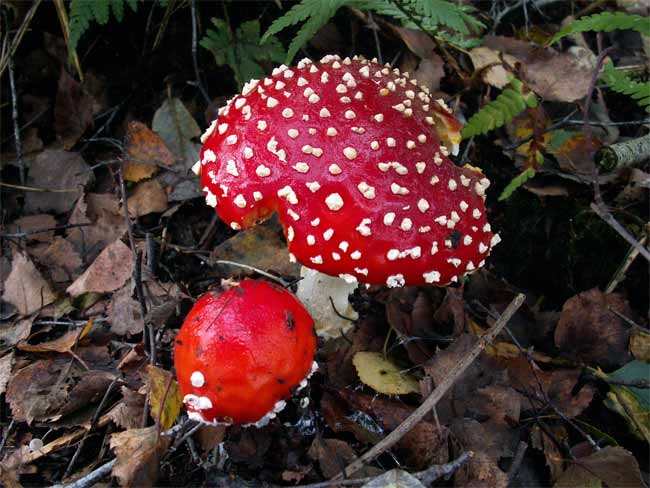The World Rots Faster as Global Warming Fuels Fungi

Fungi are fruiting and spreading more rapidly thanks to global warming, a new study finds. The result: Things are rotting faster.
From polka-dotted mushrooms that push through cracks to slender tendrils that peak out from beneath tree barks, fungal freaks are flourishing in their balmy environment.
Compared to 50 years ago, many of the fungal species in England and possibly elsewhere now fruit much earlier in the year, and some of them even reproduce twice a year due to warmer temperatures and increased rainfall.
It is "unheard of for an organism to start reproducing twice a year instead of once," said the study's lead author Alan Gange of the University of London.
More fungi, more rot
The surge in reproduction means more fungi. "The amount of mushrooms produced would be about doubled over the course of a year," Gange said. "My guess is if you would do the same study in North America you would get the same results because fungi respond to changes in the seasons."
Since fungi "devour" rotting leaves and other forest debris, a feast that boosts decomposition, Gange expects stuff will decay twice as quickly as in the past.
Sign up for the Live Science daily newsletter now
Get the world’s most fascinating discoveries delivered straight to your inbox.
The research, detailed in the April 6 issue of the journal Science, adds another data point to the list of organisms affected by global warming.
"Birds, we know, are nesting earlier, and they will also nest perhaps twice in a springtime, whereas before they used to nest only once," Gange said. "But what birds do not do is nest in autumn as well as spring. They stay within the one season."
Study details
Gange and his colleagues analyzed data spanning from 1950 through 2005 on 315 species of fall-fruiting fungi. They calculated average temperatures and rainfall amounts by month, season and years and compared these with the dates of fruiting for each fungal species.
Summer temperatures and rainfall amounts in the fall have increased since the 1950s, the scientists found. Statistical analyses showed the temperature and rain spikes caused early-season fungi to fruit earlier and late-bloomers to extend their fruiting to December, whereas before they only fruited until the end of October. On average, the fruiting season for the fungi examined has doubled since the 1950s, from 33 days to the current 75 days.
Many of the species that normally fruited only once in October now also fruit in April, a phenomenon the scientists think is the result of warmer temperatures in February and early spring.
Your backyard
Fungi don't produce their own food, but instead degrade rotting tree trunks and leaf material to obtain energy and nutrients.
"Your compost heap would now rot, disappear, at twice the rate than it would have done in the 1950s," Gange said.
Some nutrients contributed by fungal feeding also get released into the soil more rapidly now, where trees and leafy plants can access them. "My guess is that trees now have access to twice the nutrients as they used to, so their growth rates will be much increased," Gange said.
Next, Gange wants to find out if mushroom-munching insects will follow the changing fungi behavior and reproduce more frequently. "Lots and lots of insects feed on mushrooms," Gange said. "That's really how and why a mushroom disappears."
- Fungus May Be Having Sex Among Us
- Top 10 Surprising Results of Global Warming
- Top 10 Ways to Destroy Earth
Jeanna Bryner is managing editor of Scientific American. Previously she was editor in chief of Live Science and, prior to that, an editor at Scholastic's Science World magazine. Bryner has an English degree from Salisbury University, a master's degree in biogeochemistry and environmental sciences from the University of Maryland and a graduate science journalism degree from New York University. She has worked as a biologist in Florida, where she monitored wetlands and did field surveys for endangered species, including the gorgeous Florida Scrub Jay. She also received an ocean sciences journalism fellowship from the Woods Hole Oceanographic Institution. She is a firm believer that science is for everyone and that just about everything can be viewed through the lens of science.









